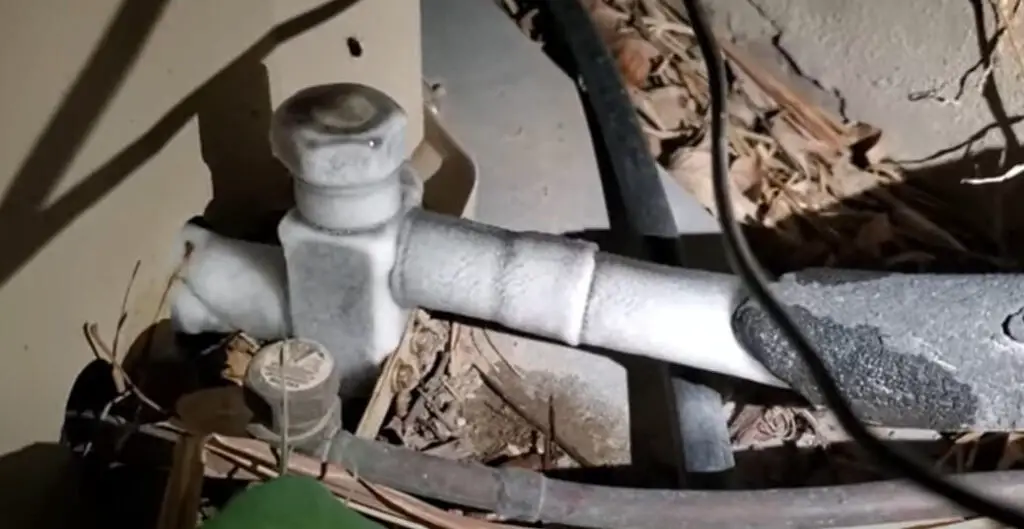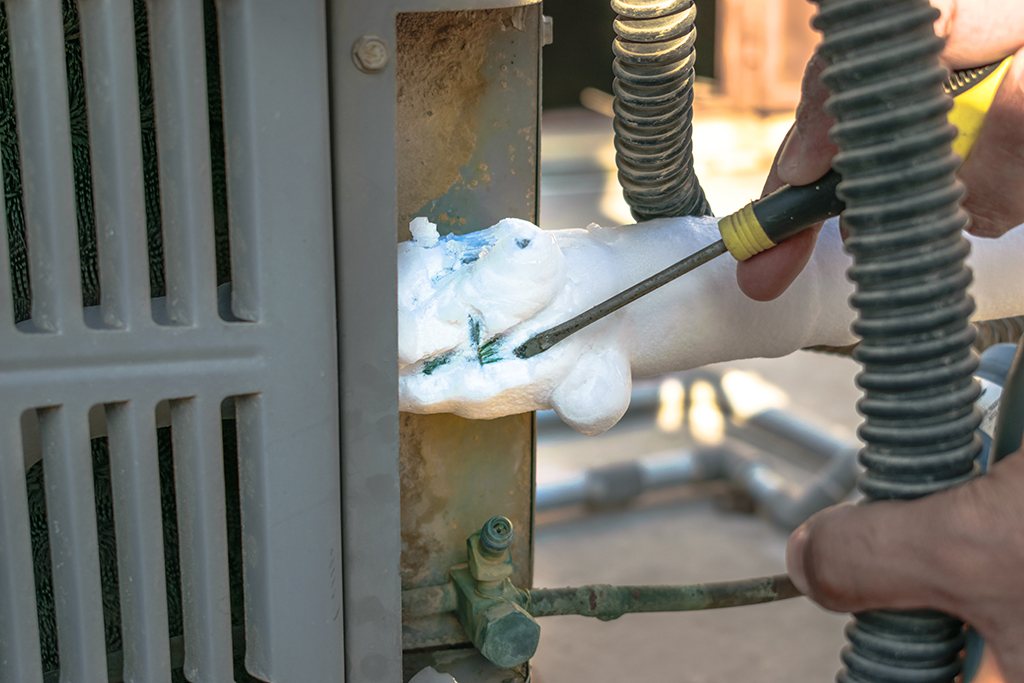Frozen AC Pipe - Causes and How to Fix the Problem
Frozen AC Pipe - Causes and How to Fix the Problem
Blog Article
Are you currently in search of information and facts Have a Frozen AC Line? Here’s How to Fix It?

Intro
Finding that your a/c pipeline is iced up can be worrying, especially during warm summertime when you rely on your air conditioning system one of the most. Recognizing what to do in such a scenario is critical to stop additional damage to your cooling system and ensure your comfort inside.
Comprehending the Causes
A number of factors can contribute to the cold of an AC pipeline. Recognizing these causes can assist you resolve the problem successfully.
Lack of Airflow
One common source of a frozen AC pipe is inadequate air movement. When the airflow over the evaporator coil is restricted, it can cause the coil to go down below freezing temperature, resulting in ice formation on the pipe.
Low Refrigerant Levels
Insufficient refrigerant levels in your AC system can additionally cause a frozen pipe. Reduced cooling agent degrees can cause the stress in the system to drop, leading to the cold of wetness on the evaporator coil.
Winter Conditions
In chillier climates, freezing temperature levels outside can add to the cold of air conditioner pipelines. If your a/c device is not effectively shielded or if there are leakages in the ductwork, chilly air can infiltrate the system, triggering the pipe to freeze.
Dirty Air Filters
Unclean or clogged air filters can restrict airflow in your a/c system, leading to different problems, consisting of an icy pipeline. It's vital to replace or clean your air filters consistently to make sure appropriate air movement and prevent ice accumulation.
Indicators of a Frozen Air Conditioning Pipe
Recognizing the indications of a frozen air conditioner pipeline is vital for punctual activity.
Lowered Airflow
If you observe a considerable reduction in air flow from your vents, it might suggest an icy pipe.
Ice Buildup on the Pipe
Visible ice buildup on the refrigerant line or the evaporator coil is a clear indication of an icy air conditioning pipe.
Weird Sounds from the Unit
Uncommon noises, such as hissing or bubbling, coming from your air conditioning unit can indicate that there's ice present on the pipeline.
Immediate Actions to Take
When faced with an icy a/c pipe, it's important to act rapidly to prevent more damage to your air conditioning system.
Shutting off the AC
The very first step is to shut off your a/c to prevent the system from running and aggravating the issue.
Looking for Blockages
Evaluate the area around the indoor device for any type of blockages that may be blocking air flow, such as furnishings or curtains.
Thawing the Pipe
You can utilize mild approaches like placing towels taken in cozy water around the icy pipe to help thaw it slowly.
Preventive Measures
Taking safety nets can aid stay clear of future occurrences of an icy air conditioner pipe.
When DIY Methods Fail
If your attempts to thaw the pipe or address other issues are unsuccessful, it's time to hire a specialist.
Significance of Hiring a Professional HVAC Technician
A licensed HVAC professional has the proficiency and devices essential to detect and repair concerns with your AC system safely and effectively.
Regular Maintenance Checks
Arrange routine maintenance contact a specialist HVAC technician to ensure that your air conditioner system is running successfully.
Altering Air Filters
On a regular basis change or clean your air filters to prevent air movement limitations and keep ideal performance.
Shielding Exposed Pipes
If your a/c pipes are subjected to chilly temperatures, consider shielding them to prevent cold during winter months.
Seeking Professional Help
If DIY techniques fail to solve the concern or if you're not sure about how to proceed, it's best to look for help from a certified HVAC professional.
Final thought
Dealing with an icy air conditioning pipeline can be a frustrating experience, yet recognizing exactly how to react can aid decrease damages and restore comfort to your home. By recognizing the reasons, recognizing the indicators, and taking prompt action, you can effectively attend to the issue and avoid future events.
What to Do If Your AC Line Is Frozen
Make Sure All Supply and Return Air Vents Are Open
If you notice problems with airflow, the first thing you should do is check your supply and return vents. Supply vents distribute clean, conditioned air throughout your home. As this air becomes stale, it’s pulled into the return vent, where it’s reconditioned before being sent back out through the supply vent.
When these vents are closed, air won’t flow in the home. Before examining your AC, check the vents in every room and ensure they’re all open.
Check for a Dirty Air Filter
Another possible cause of limited airflow is a dirty air filter. Your air conditioner’s filters catch elements you don’t want to breathe in, such as dirt and dust. Over time, filters can become clogged, ultimately blocking air from flowing in and out. The lack of airflow can then cause the entire coil to freeze and will completely restrict any air from moving through it. The AC may need to be powered off for one to two days to allow the coil to thaw after replacing the filter to allow proper functioning of the unit. This debris can also accumulate on your AC’s evaporator coil, requiring a more serious repair. In general, air filters should be cleaned regularly (about every two weeks).
Assess Your Outdoor Unit
In addition to checking your AC, assessing the outdoor unit is a good idea. Also known as the condensing unit, it works with your interior unit to release heat outside. An issue with the outdoor unit can result in rising internal temperatures.
Overgrown Shrubs or Clogged Leaves
From leaves and twigs to shrubs and debris, there’s no shortage of outdoor elements that can accumulate around your condensing unit. When these elements get lodged inside the unit, they can block airflow. Fortunately, removing the blockage can solve the problem.
Sounds of a Broken Fan
Shrubs and leaves aren’t the only things that can impede your outdoor unit’s airflow. If the fan is broken, the unit won’t be able to properly get rid of heat — which means the internal temperature won’t go down. First, make sure the fan is spinning. If it is, check for the following sounds of a broken fan:
Buzzing Rattling Screeching Hissing Clicking Preventative Measures
Nobody wants to deal with a frozen AC line. In addition to causing problems with your air conditioner, they require professional repairs. On the bright side, there are preventative measures you can take to help ensure this issue doesn’t arise in the first place.
https://www.coopergreenteam.com/blog/what-to-do-if-ac-line-frozen

I ran across that article about How can I fix an air conditioner’s frozen pipe? while doing a lookup on the search engines. Liked our piece? Please share it. Help someone else find it. Thank you for your time. Please come visit our site back soon.
Click Here Report this page